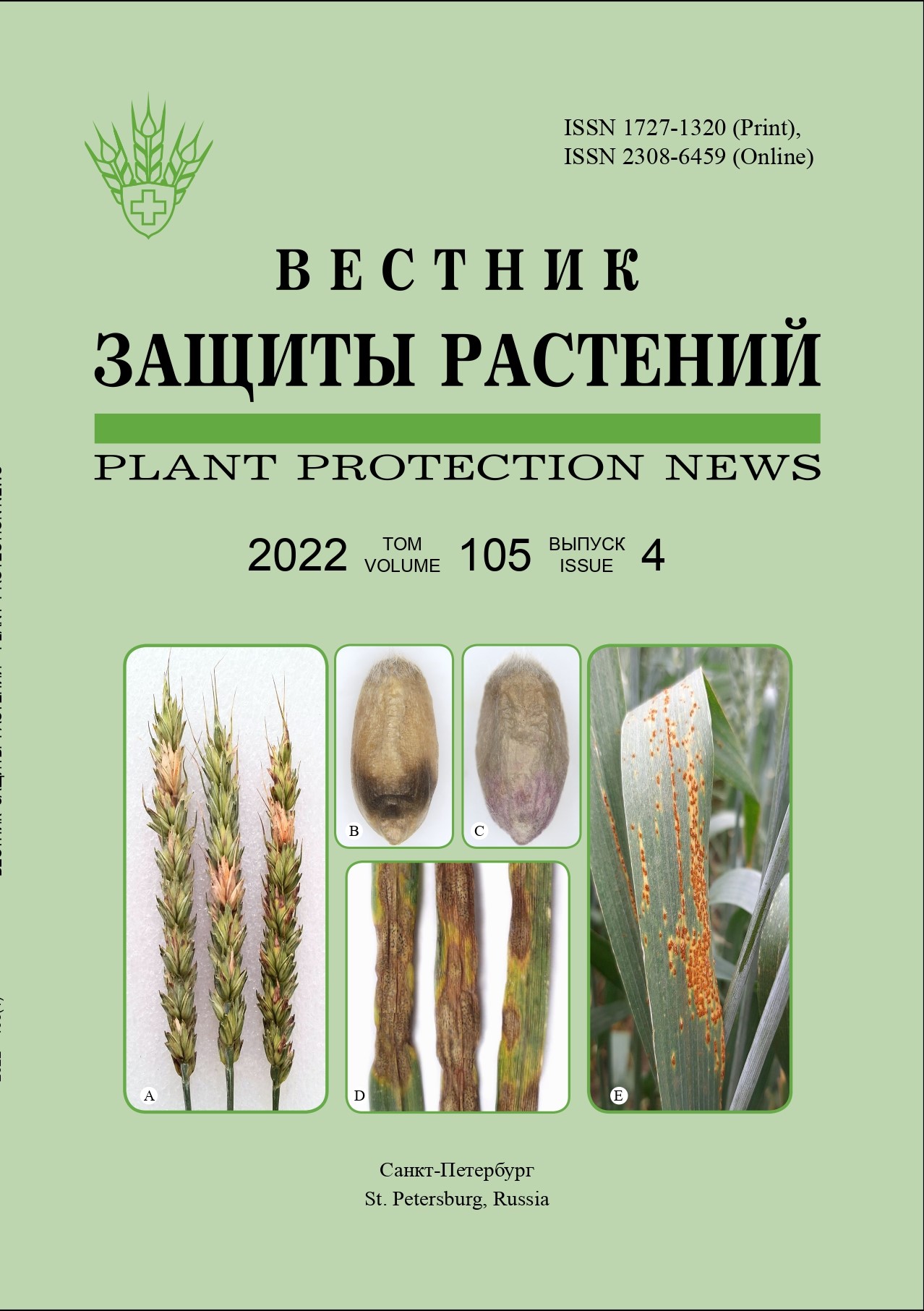The topical specificity of the whitefly Trialeurodes vaporariorum in relation to morphological and anatomical features of cucumber cotyledon leaves
Keywords:
phytophagous insect, cotyledons, leaf anatomy, spongy parenchymaAbstract
The Trialeurodes vaporariorum first instars (crawlers) are mobile and able to choose the optimal spots on the leaf for constant feeding favorable for the pest development. Spatial distribution of larvae and adults on the cucumber Ginga F1 cotyledon leaves, as well as the morpho-anatomical structure of cotyledons on cross sections have been studied in the laboratory. Some differences in topology of feeding sites between adults and larvae were revealed. Females occupying the underside of the leaf preferred to feed and lay eggs mainly in the basal part of the cotyledons. Unlike adults, the highest number of crawlers chose the marginal zone of cotyledon leaves for feeding. Larvae concentrated along the cotyledon perimeter forming a band of 1-1.5 mm wide. We demonstrated that the choice of feeding spots by crawlers was most likely associated with specific features of the morpho-anatomical structure of a cotyledon leaf. We showed that conductive bundles with phloem in their lower part were located on the border between the palisade and spongy parenchyma. The height of the spongy parenchyma decreased from the central part of the leaf to the edges by 2-3 times. The whitefly is an insect that feeds on the content of phloem sieve elements, and so we assume that the shorter length of the piercing stylet of the crawlers allow feeding only in the marginal zone of the cotyledon leaves of cucumber of this variety, in contrast to the adults.



